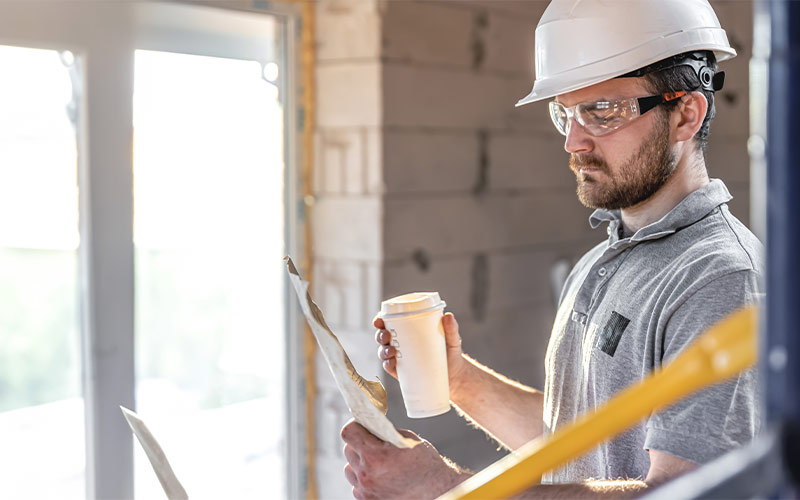
Navigating California’s building safety requirements can often feel overwhelming, especially with multiple laws mandating balcony inspections. Property managers, HOAs, and building owners frequently ask: What exactly is the difference between SB326 and SB721, and how do these regulations impact compliance?
Understanding the distinction is critical for meeting legal obligations and ensuring resident safety. Each law has its own scope, timelines, and property types it applies to. Whether seeking an SB326 report generation service for a condo community or an SB721 report generation service for an apartment complex, knowing the differences helps avoid costly mistakes and compliance gaps.
Quick Overview: Why These Laws Exist
California passed SB326 and SB721 following several tragic incidents involving balcony collapses. These regulations aim to enhance public safety by mandating regular inspections of Exterior Elevated Elements (EEEs), such as balconies, decks, stairways, and walkways.
Both laws focus on early identification of structural risks, promoting timely repairs and preventing future tragedies. However, they target different property types and have different procedural requirements.
Key Differences Between SB326 and SB721
1. Property Type Covered
- SB326: Applies exclusively to condominiums and cooperatives governed by a homeowners association (HOA).
- SB721: Applies to apartment complexes and other multifamily residential properties with three or more units that are non-condominium.
Condominium owners looking to stay compliant typically need an SB326 report generation service, while rental property owners must align with SB721 report generation service requirements.
2. Responsible Parties
- SB326: Responsibility lies with the HOA. The association must coordinate inspections and handle necessary repairs.
- SB721: Responsibility falls directly on property owners or their management companies.
This distinction influences who must arrange inspections, pay for necessary repairs, and maintain records.
3. Inspection Deadlines
- SB326: The first inspection must be completed by January 1, 2025. After that, inspections are required at least once every nine years.
- SB721: The initial inspection deadline is also January 1, 2025, but subsequent inspections are required every six years.
The shorter inspection interval for SB721 reflects the higher turnover and occupancy rates typically found in rental properties.
4. Scope of Inspections
- SB326: Inspections primarily focus on EEEs that are a part of the common area or exclusive-use common area maintained by the association.
- SB721: Inspections include balconies, decks, stairways, catwalks, and any other load-bearing exterior structures six feet or higher above ground level.
While both laws cover similar structures, SB721 tends to involve a broader range of building elements due to differences in property management structures.
5. Reporting Requirements
- SB326: Results must be summarized in a written report provided to the HOA board and maintained as part of the association’s records.
- SB721: Reports must be submitted to the local building department under certain conditions, especially if dangerous conditions are discovered and not promptly repaired.
Professional SB721 report generation service providers ensure proper documentation and timely submissions to local authorities to avoid penalties.
6. Repair Requirements
- SB326: Repairs identified during inspections must be prioritized by urgency. Associations must disclose repair needs to members in their annual budgets and reports.
- SB721: Life safety issues must be repaired within 120 days of notice, and a reinspection is often required to confirm satisfactory work.
The strict deadlines under SB721 emphasize swift action when hazardous conditions are found.
Common Ground Between SB326 and SB721
Despite their differences, these regulations share key similarities:
- Licensed Professionals: Both require inspections by licensed architects, structural engineers, civil engineers, or certified building inspectors.
- Focus on Structural Safety: Each law emphasizes the importance of identifying and mitigating risks associated with structural degradation.
- Photographic Documentation: Comprehensive photo logs are crucial for both SB326 and SB721 reports.
- Long-Term Maintenance Plans: Inspections often inform broader property maintenance strategies, preventing costly repairs down the line.
Services that specialize in SB326 report generation service and SB721 report generation service are skilled in meeting the nuanced demands of each regulation.
Practical Tips for Staying Compliant
- Start early: Don’t wait until late 2024 to begin planning inspections. Scheduling ahead ensures access to qualified professionals.
- Bundle inspections: If managing multiple properties, consider bundling SB326 and SB721 inspections to streamline logistics.
- Use technology: Partner with providers who use AI-driven tools and drones to speed up inspections and enhance documentation quality.
- Budget proactively: Set aside funds for potential repairs identified during inspections to avoid financial strain later.
- Work with experts: Choose inspection teams that offer both SB326 report generation service and SB721 report generation service for comprehensive support.
Real-World Example: Managing Compliance Across Property Types
A property management company overseeing both condominiums and rental apartments in Southern California successfully coordinated compliance by partnering with an inspection firm offering bundled SB326 and SB721 services. Using AI-enhanced inspections and real-time data management, they completed all required reports six months ahead of deadlines, avoided rush fees, and minimized disruptions for residents.
This example highlights the importance of strategic planning and choosing the right compliance partners.
The Role of AI in Supporting Compliance
Modern AI-powered inspection tools enhance accuracy, reduce human error, and speed up reporting for both SB326 and SB721 projects. Features like automated defect detection, real-time data tagging, and predictive maintenance analytics ensure inspections are thorough and regulator-ready.
Using AI technology helps property managers and owners:
- Catch issues early
- Maintain consistent inspection quality
- Improve communication with repair contractors
- Ensure detailed and standardized reports
Final Thoughts
Understanding the differences between SB326 and SB721 regulations is essential for meeting compliance requirements efficiently and confidently. Whether managing a condo complex or an apartment building, staying proactive ensures not only legal compliance but also the safety and wellbeing of all residents.
Partnering with trusted experts offering SB326 report generation service and SB721 report generation service makes the journey toward compliance smoother and less stressful.
If any questions arise about SB326, SB721, or planning balcony inspections, feel free to leave a comment below. A response will be provided as soon as possible to assist with navigating the process.
